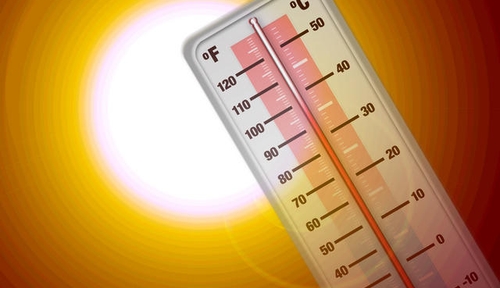Did you sit in your too warm office this summer wondering why you were suffering when it was 99 degrees outside? Did you assume your agony couldn’t possibly begin to have an impact on the overall campus energy use?
LiveGreen and facilities are happy to tell you that your efforts paid off. Literally.
“So far this year our peak was 23.6 megawatts, which is 2.8 megawatts lower than last year,” said Ken Hansen, assistant vice chancellor of facilities. “Plus, when we hit last year’s peak, Eppley Cancer Institute, Poynter Hall and the Truhlsen Eye Institute were not yet open, so UNMC wasn’t supplying them with any energy. Your efforts saved 2.8 megawatts, plus an additional three buildings’ worth of electricity. Fantastic!”
In addition to saving the energy immediately, the campus also benefits the following year. UNMC electricity rates are based on its “peak” usage, the maximum amount of electricity needed at one time. The higher the peak, the higher next year’s electric rate.
During this heat wave campus employees and students were rewarded with treats when they were caught helping with energy curtailment. Check out the pictures here.
“The combined heat and humidity in August were particularly challenging this year, but efforts made by facilities and all of the individuals on campus helped a great deal” said Rick Kmiecik, director of strategic energy initiatives. “We understand that changes to the temperature in your space can be an inconvenience, but making those small changes on an individual level helps the campus in a big way.”
This was especially important during the late summer heat wave as students were back on campus — having more people on campus creates a need for more cooling and energy. The worst of the summer heat is usually over before students return, but not this year.
Final monetary and environmental savings, as well as health benefits, are still being calculated and will be available on the LiveGreen website soon. This peak savings will make UNMC eligible for an OPPD rebate, and that money, along with other cost reductions, will be used to pay for energy-saving campus infrastructure, such as the new control system and the central utility plant’s new chillers.
“The money we save on energy costs can help us to upgrade aging campus systems which will help to keep energy costs down in the future,” Hansen said.
